How To Get Rid Of Fleas In House
Flea Infestation
Are you experiencing a flea infestation in your home?
Depending on where you live a wide range of diseases may be spread by fleas to people.
Before we share a few tips on how to get rid of fleas in your home, it’s important to understand a little bit about these tiny insects.
Adult Fleas
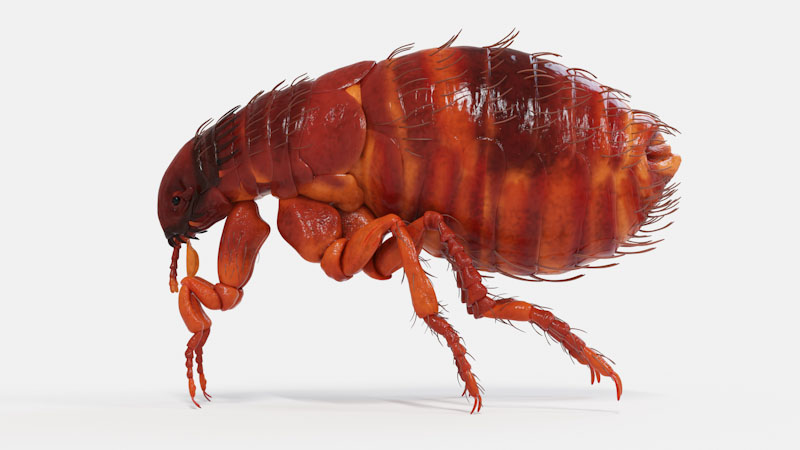
Fleas are small, dark brown or black insects that suck blood from animals, including humans. They are roughly the size of a pinhead and can quickly multiply. They suck blood.
Hosts
Cats and dogs make excellent hosts because their dense fur that offers lots of refuge for them to feed or lay eggs.
Whilst they are most commonly associated with pets, they can also be found in the wild, living on squirrels, rabbits and other animals.
Flea Athletes
Fleas jump up to 7 inches vertically and 13 inches horizontally, making it easy for them to move from one host to another.
Does your home have a Flea Population?
It’s vital to keep your pets and home free of fleas by regularly checking your pets. Fleas are tiny, and it’s easy to miss them until they become a significant problem. Inspection can help catch fleas early and stop an infestation before it becomes severe.
When inspecting your pets, look for signs of itching, scratching, or redness on their skin. These are all indications that fleas may be present.
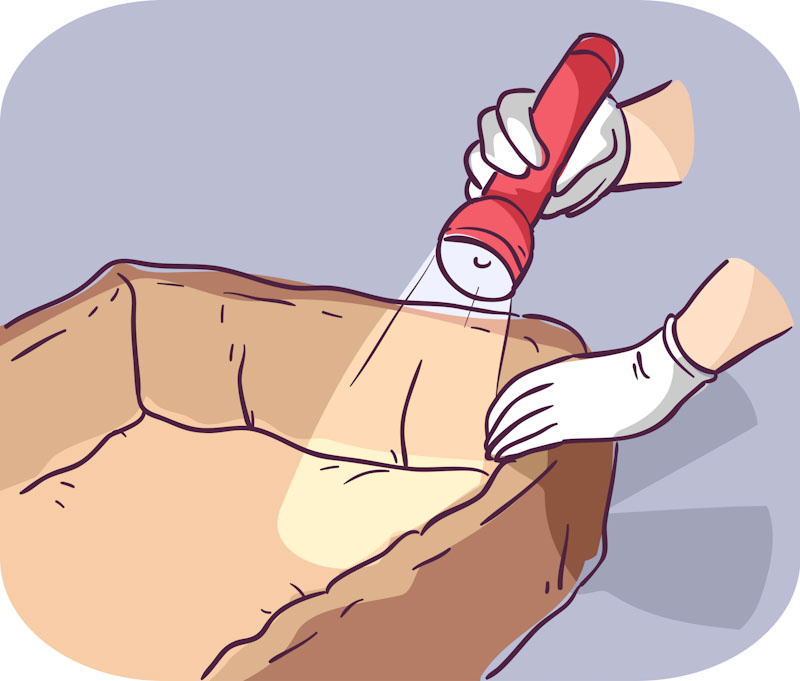
Don’t forget to inspect your pet’s bed and where your pet likes to spend time around the house, as fleas can hide in these areas as well.
When inspecting your home, pay close attention to areas where your pet spends most of their time. Fleas tend to hide in carpets, furniture, and other soft surfaces where pets sleep. Look for flea dirt (sometimes called flea waste. Flea dirt looks like tiny black specks and is actually flea faeces.
Check a pet that is:
- persistently scratching
- biting themselves
- subject to tiny red spots on their skin from flea bites.
Flea infestations can also cause an allergic reaction in both pets and humans. If you or your pet are experiencing unexplained itching or rashes, check for fleas.
How they got in your home
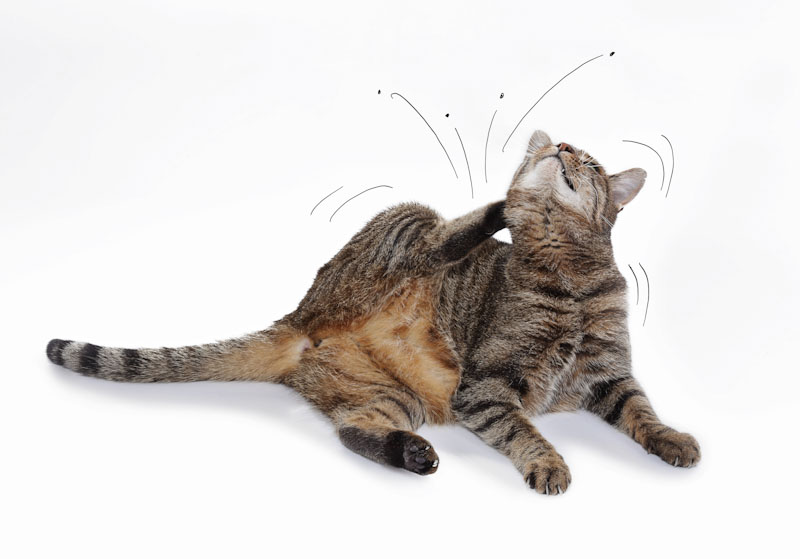
Flea infestations stem mostly from pets during the summer flea season.
Anytime your pet goes outdoors, they may come back inside carrying fleas. So it is vitally important to know how to get rid of fleas on your pet.
Fleas can transmit serious illnesses including dermatitis and flea allergy to cats and dogs. Your pet could unknowingly consume tapeworm larvae when grooming themselves.
It important to keep your pets away from other animals that may be infested with fleas, as they can easily transfer them to your pet.
In more rare instances fleas can also be brought into your home by rodents or any other animal that may have gained access.
Finally fleas can also be brought into your home through second-hand furniture or clothing.
The Flea Life Cycle (And Why This Is Important)
Killing fleas is difficult because immature fleas will grow up even after you have killed the adult fleas. Understanding their life cycle will help you combat them.
Fleas go through four life stages – egg, larva, pupa, and adult.
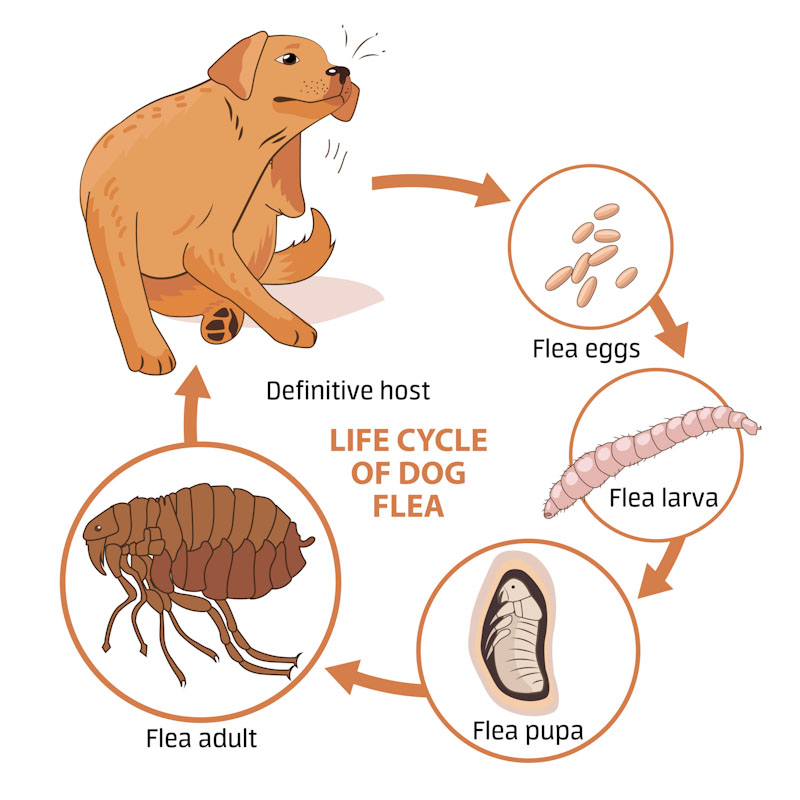
A female adult flea can lay about 50 eggs per day. It takes anywhere between a few days to weeks for the eggs to hatch, and the larvae feed on flea dirt, skin cells, and hair.
After a couple of weeks, they turn into pupae and remain dormant until vibrations and heat awaken them, turning them into adult fleas.
Eggs can lay dormant for up to a year, making most flea infestations difficult to completely eradicate.
How to Repel, Remove, and Kill Fleas
Killing Fleas At The Source
Fleas present a common problem for pet owners, and they can be particularly challenging to get rid of once they infest your home. Fleas can cause your pets to scratch incessantly, and they can even transmit diseases to both pets and humans.
Spot Treatments
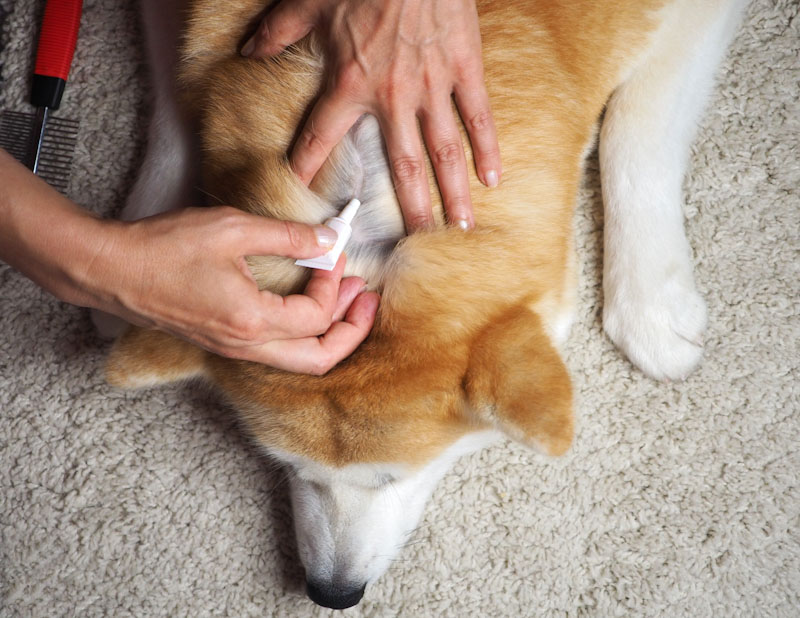
Spot treatments (also called topical medication) are applied directly onto your pet’s skin and effectively kill any fleas on contact and continue to repel fleas for several weeks.
Spot treatments are a popular choice for pet owners because they are easy to use and provide quick relief for pets suffering from fleas. They are also safe for use around children and other pets.
When using spot treatments it’s important to follow the instructions carefully. Be sure to apply the product directly to your pet’s skin, and avoid getting it in their eyes or mouth.
If you notice any adverse reactions, be sure to contact your veterinarian immediately.
Oral Medications
Oral medications are typically given once a month.
They contain insecticides that kill fleas and their eggs and protect your pet from re-infestation.
It is essential to follow the instructions carefully and to ensure that you are using the correct dosage for your pet’s weight.
If you notice any adverse reactions, be sure to contact your veterinarian immediately.
Flea Shampoos and Dips
Flea shampoos and dips are an effective way to get rid of fleas on your pets. These products contain insecticidal ingredients that kill fleas and their eggs. They should be used regularly until the fleas are eradicated. When using a flea shampoo, it is essential to follow the instructions carefully and to ensure it is thoroughly rinsed out of your pet’s fur.
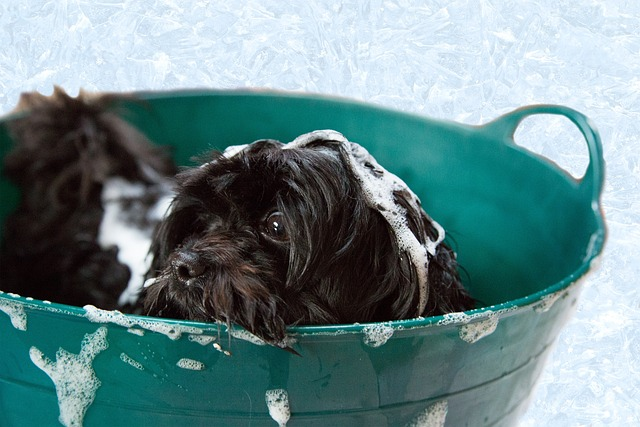
It is also important to note that some pets may be sensitive to the ingredients in flea shampoos and dips. If you notice any adverse reactions, such as excessive scratching, redness, or swelling, discontinue use immediately and consult your veterinarian.
Flea Comb
For non-toxic flea control, flea combs are a fantastic way to remove fleas. Flea comb regularly. When you clean your dog or cat with a flea comb, the comb’s extremely close spaced teeth catch most fleas themselves, flea eggs, and flea dirt.
In order to prevent further fleas in your home, comb your pet outside. To get rid of any fleas or flea eggs you may find, put your flea comb into hot water along with some washing up dish detergent. This will kill adult fleas because it acts as a act as a gentle insecticide.
Flea Collars and Prevention Products
Flea collars repel fleas and prevent re-infestation in your pets. Flea collars have the added advantage of being water-resistant and long-lasting.
It is important to note that a flea collar or other prevention products may not be as effective as other flea control methods, particularly if you have a severe flea infestation.
#Additionally, some pets may be sensitive to the ingredients in a flea collar and prevention products. If you notice any adverse reactions, discontinue use immediately and consult your veterinarian.
Herbal Flea Sprays
Certain essential oils, such as lavender, peppermint, and tea tree oil, have flea-repelling properties. They can be used to make a flea spray that is safe for pets and humans. To make a one mix ten drops of your preferred essential oil with one cup of water in a spray bottle. Spray the solution on your pet’s fur and bedding.
The Home
Use a Powerful Vacuum
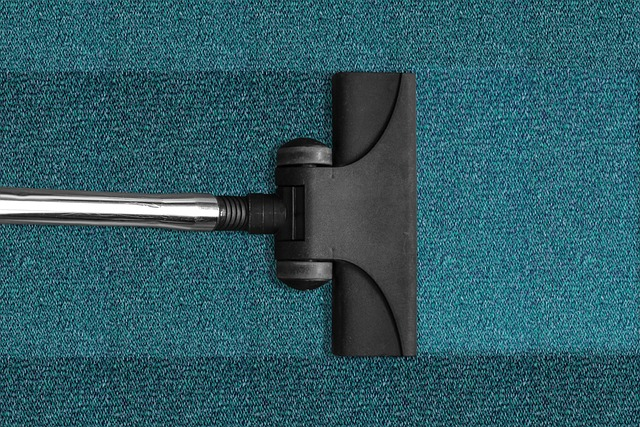
Vacuuming is one of the most effective ways of preventing fleas. However, it’s not just about running the vacuum over your carpets and upholstery. To effectively get rid of fleas, you need to vacuum your entire home, paying particular attention to any areas where your pet spends the most time. This includes under furniture, along baseboards, and in the corners of rooms. They can lay their eggs in these areas, so it’s important to be thorough.
After vacuuming, dispose of the vacuum bag immediately or empty the canister far from your home. Fleas can survive in the vacuum bag or canister, so it’s important to get rid of it properly.
A Consistent Cleaning Schedule
Keeping your home clean is an excellent preventative measure. Regularly cleaning and vacuuming your home will help eliminate any fleas and their eggs.
Vacuuming can help remove fleas and their eggs from carpets, furniture, and other surfaces. It’s essential to vacuum your home thoroughly, including under furniture and in hard-to-reach areas.
Washing your pet’s bedding and toys regularly can also help prevent a fleas. Don’t forget to clean your pet’s crate or carrier as well.
Hire a Steam Cleaner
Steam cleaning your carpets, furniture, and pet beds is a great option. The fleas will be eliminated quickly thanks to the successful combination of high heat and soap.
After steam cleaning, vacuum every other day to ensure you are killing fleas as they hatch.
A Flea Trap
A flea trap has a warm lamp that attracts fleas.
Once they approach the fleas are trapped on a sticky pad. The sticky pads must be changed periodically.
If you draw around the fleas on the sticky pad every day, this will help you identify how the flea population changes over time.
Buying a spare lamp and some spare sticky pads might be a good idea.
Flea traps are useful for eliminating fleas in small areas, but it’s vital to remember that in order to be fully effective, they must be used in conjunction with other flea-control techniques.
Flea Bombs and Foggers
Flea bombs and foggers are an effective way to treat an entire house or room at once. These products release an insect-killing fog that penetrates every nook and cranny of the room and kill fleas. Most also contain an insect growth regulator (IGRs) that disrupt how insects grow and reproduce.
When using flea bombs and foggers, it’s important to follow the instructions carefully. You’ll need to vacate the room for a few hours, and you’ll need to cover any food or dishes to prevent contamination.
While flea bombs and foggers are effective at killing fleas, they can also be harmful to humans and pets if not used correctly. Cover aquariums, birds, cages and any food dishes.
Be sure to read the instructions carefully and take all necessary precautions. It’s ideal to do it when everyone’s not home.
Diatomaceous Earth
Diatomaceous earth is a naturally occurring sedimentary rock powder. Diatomaceous earth particles resemble glass shards when examined via a powerful microscope. Its like a miniature version of barbed wire that kills adult fleas by lacerating and dehydrating them.
It is safe to use around pets and humans and is an excellent alternative to chemical flea treatments. To use diatomaceous earth, sprinkle a thin layer of it on carpets, pet bedding, and other flea-infested areas.
Leave it for a day or two and then vacuum it up. Repeat the process if necessary.
Salt Treatment
Salt has dehydrating properties that can be used to combat fleas. Sprinkle it on your carpet and leave it overnight.
The salt will dehydrate the fleas, making them easier to vacuum up. Repeat the process if necessary.
Sprinkle Baking Soda
Despite being effective at absorbing odours, we haven’t seen any compelling evidence to support the claim that baking soda can kill fleas or dry out remaining eggs.
Clear Your Outdoor Spaces
Keeping outdoor spaces tidy and free of debris can go a long way in preventing flea infestations. They thrive in warm and humid environments, so keep your outdoor space well-maintained, and clear away any debris to make it less attractive to fleas.
Consider using nematodes, which are tiny worms that feed on flea larvae, to help control flea populations in your yard. These worms are safe for pets and humans and can be purchased at most garden centres.
Seek Professional Help if Necessary
If all else fails, it may be time to seek professional help. Professional exterminators can provide an in-depth assessment of your flea problem and offer customized solutions that will completely eliminate the problem.
They use specialized equipment and chemicals that are safe for both pets and humans.
To Sum Up
Fleas are an all-too-common household pest that can cause a myriad of problems.
Keep your pets clean, bathe them regularly, and groom them thoroughly. This will help prevent fleas.
Luckily, you can treat your pet and get rid of fleas in your home if an infestation occurs. You can use a chemical treatment or try natural remedies.
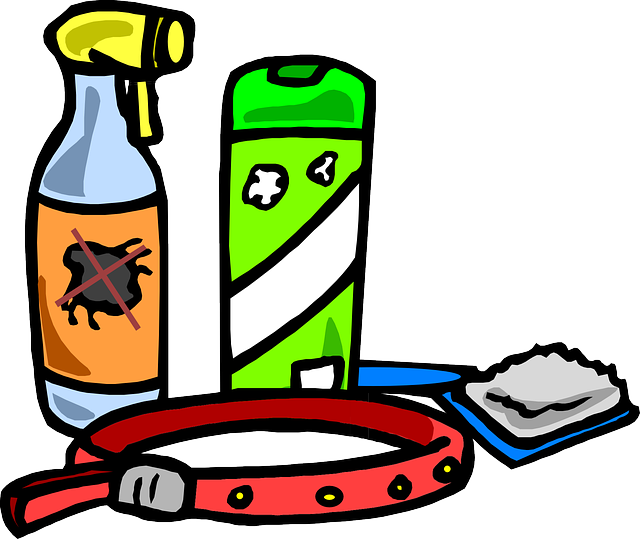
The best way to get rid of all the fleas is to use a combination of pet friendly tactics for four to six weeks.
When you treat fleas it is important to consult your veterinarian if you have any concerns about the health of your pet or if you notice any adverse reactions a flea treatment.
By consistently checking your pets, and using preventive measures, you can avoid future infestations of your furry friend and regain control of your home.
See more Helpful Content
Visit our Homepage
